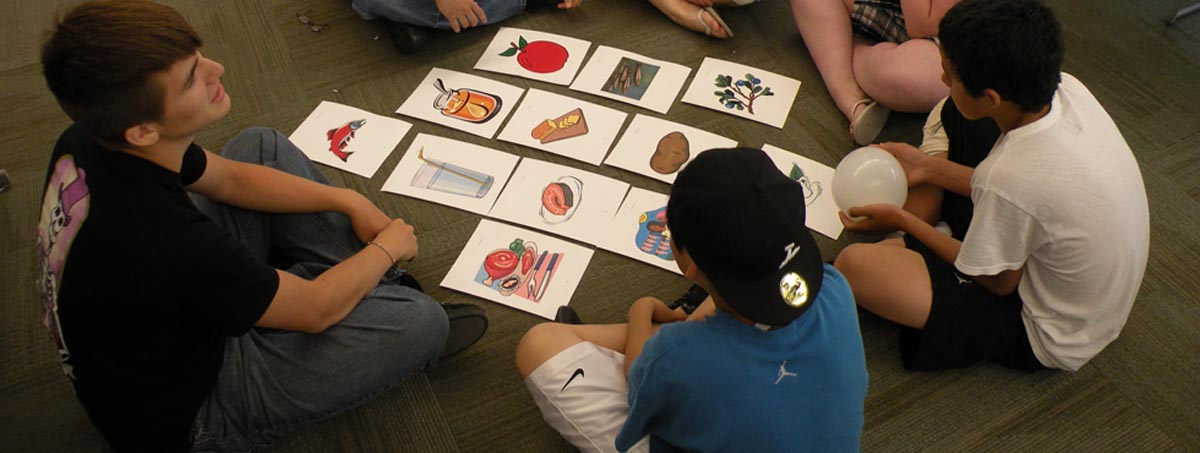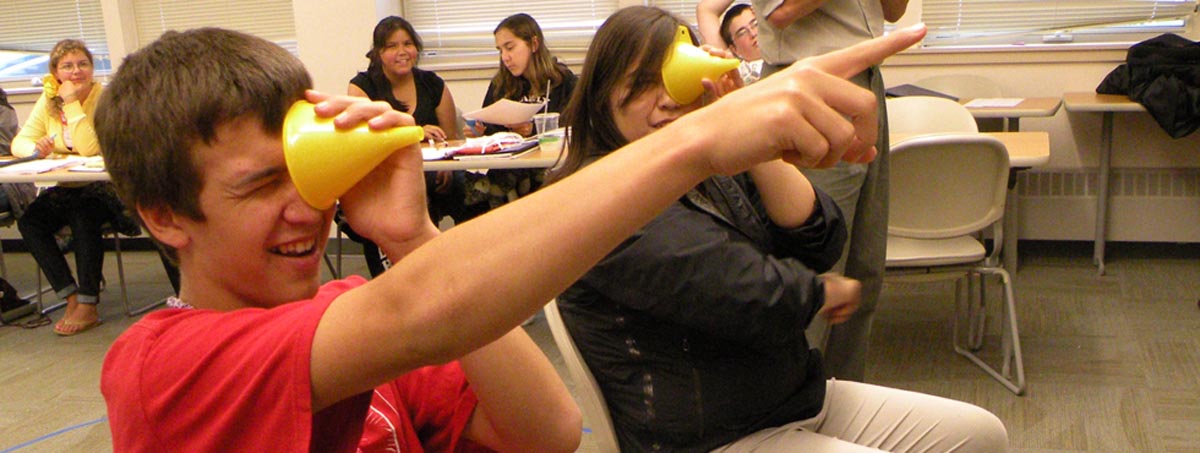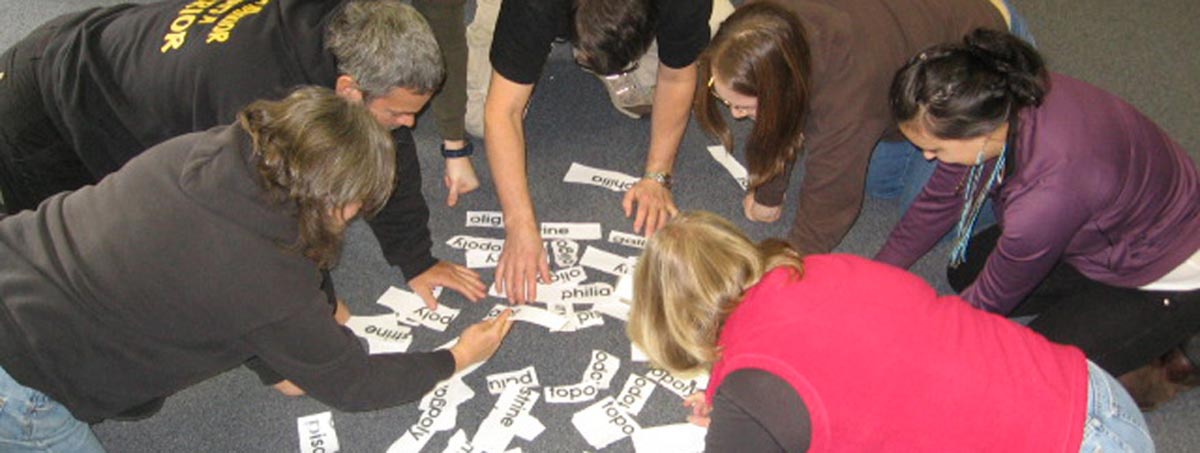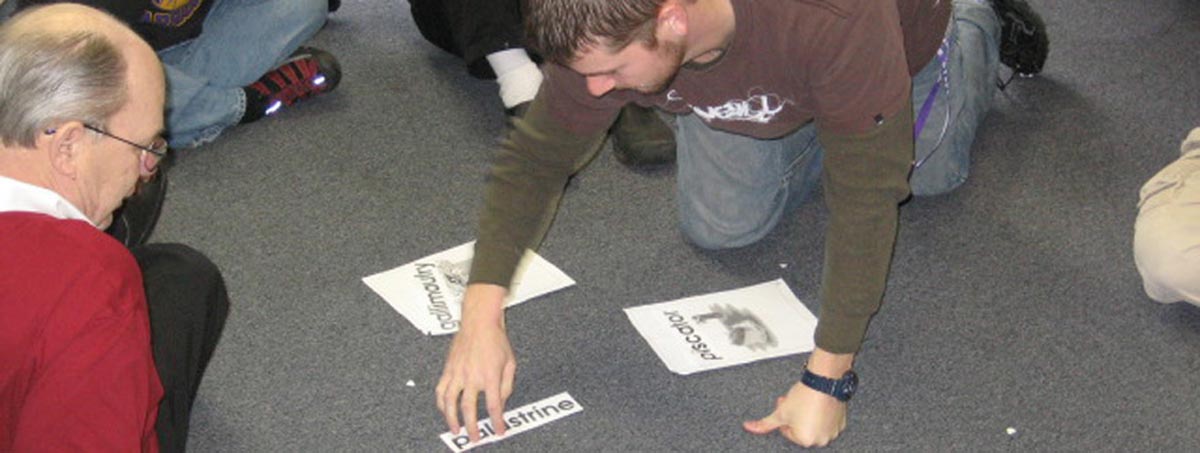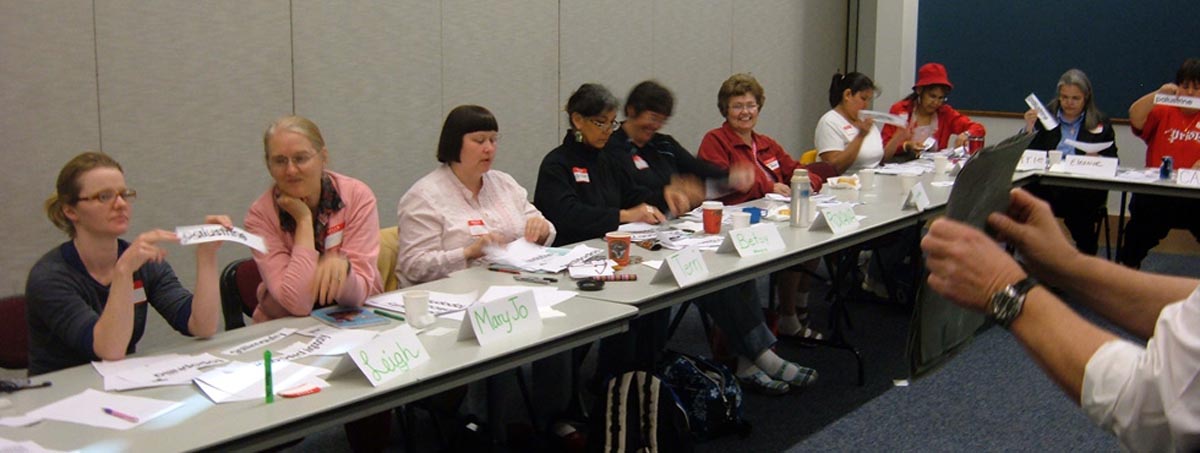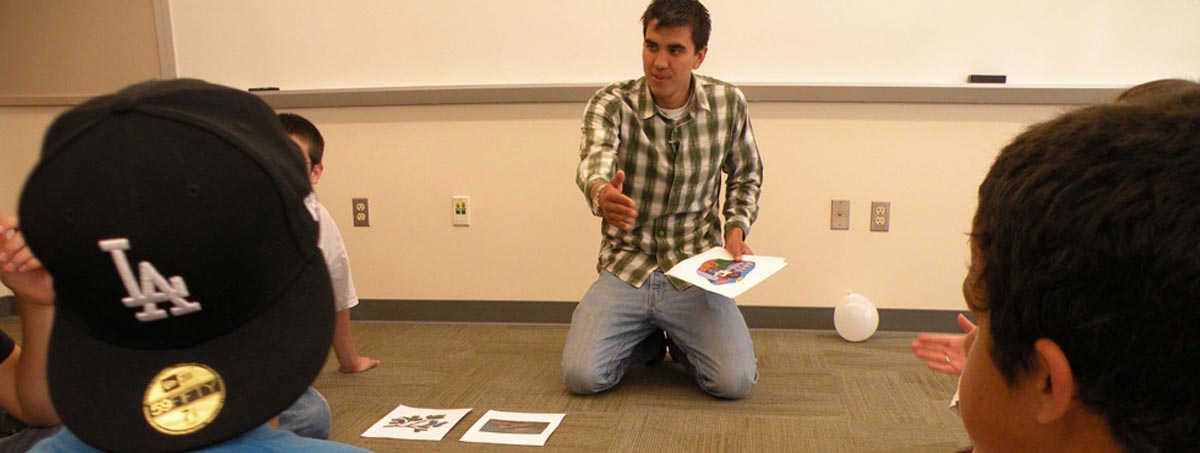
The Process incorporates meaningful language content from the environment, academic programs, stories, and themes to enlarge the students’ language bases. The DLP is effective in all subject areas and at all grade levels. Since the DLP is a process, it does not add content to a teacher’s already heavy schedule but it does provide a venue for developing the academic language for content covered in the curriculum.
The Process takes the students through developmental steps that reflect the acquisition of natural language in the home and community. Initially, once key language items have been introduced concretely to the students, the vocabulary are used in the first of the language skills, Basic Listening. This stage in the process represents input and is a critical venue for language acquisition and retention. A baby hears many different things in the home, gradually the baby begins to listen to what he/she hears. As a result of the input provided through Basic Listening, the baby tries to repeat some of the language heard – this is represented by the second phase of the Process, Basic Speaking – the oral output stage of language acquisition.
As more language goes into a child’s long-term memory, he/she begins to understand simple commands and phrases. This is a higher level of listening represented by the stage, Listening Comprehension. With the increase in vocabulary and sentence development, the child begins to explore the use of language through the next stage in the process, Creative Speaking. All of these steps in the Process reflect the natural sequence of language development.
The listening and speaking skill areas represent true language skills; most cultures around the world never went beyond these skill areas to develop written forms. Oral traditions are inherent in the listening and speaking skills.
The Developmental Language Process integrates the real language skills of listening and speaking with the related skills of reading and writing. During Basic Reading, the students are introduced to the printed words for the first time. These abstract representations are now familiar, as they were initially introduced and practiced through the listening and speaking activities. In this way, a relationship is formed between the printed words and language. It is vital for the students to understand that reading and writing are talk in print.
As more language goes into the children’s long-term memories, they begin to comprehend more of what they read, in Reading Comprehension. Today, many school attics are filled with programs that didn’t work – in reality, any of the programs could have worked had they been implemented through a language development process. For many students, the printed word creates angst, particularly if they are struggling with the reading process. Often, children are asked to read language that they have never heard and don’t understand.
A child’s ability to comprehend well in listening and reading, and to be creatively expressive in speaking and writing, will never improve until his/her language base is enlarged.


